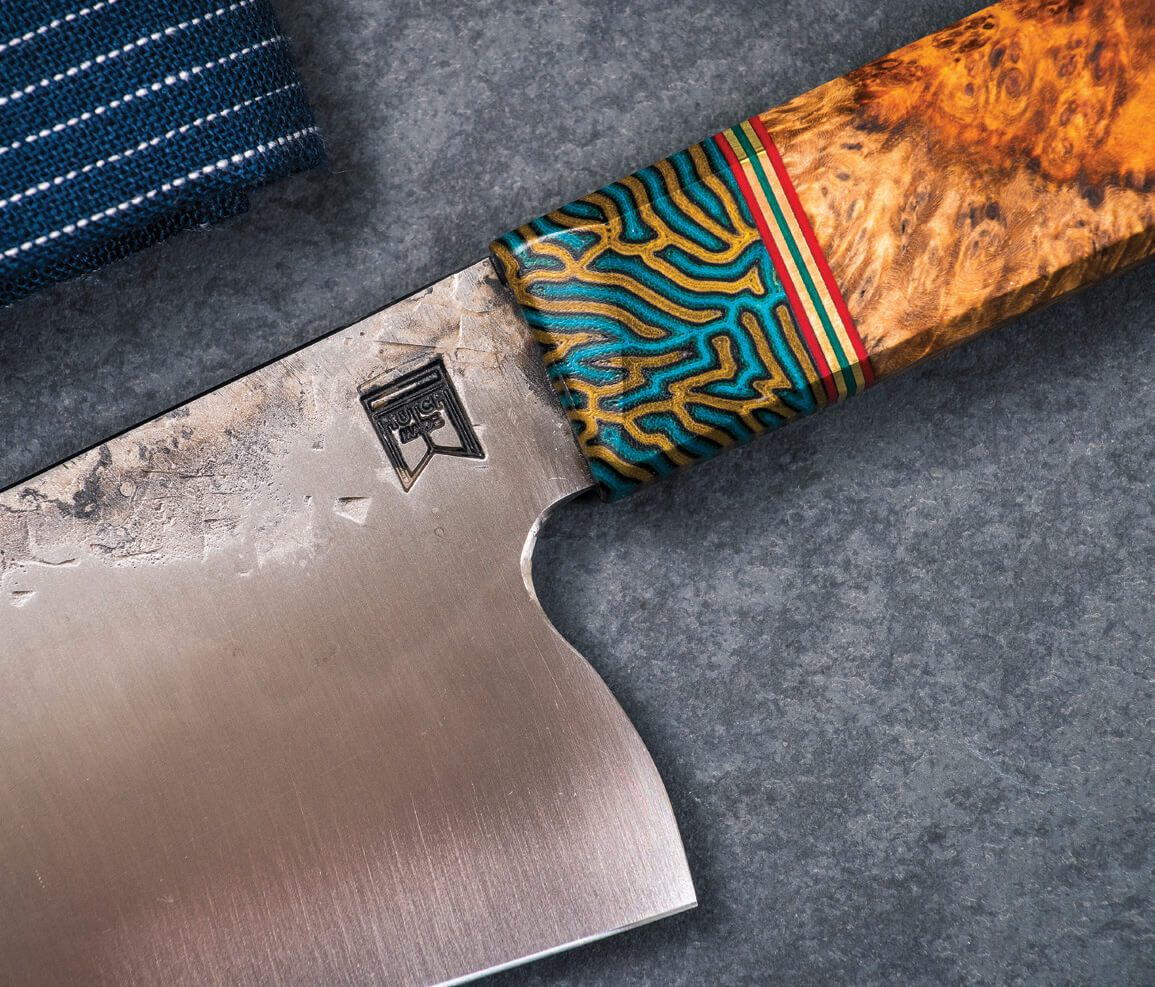
25 Sep Local Knowledge: An Evolution of Art and Craft
Knife maker Will Hutchinson — known to most as “Hutch” — has spent a lot of time thinking about the marriage of form and function. With an undergraduate degree from the Art Academy of Cincinnati in Ohio and a Master of Fine Arts from the University of Montana in Missoula, he’s spent years working at the margin between fine art and craft, ultimately deciding that it’s not a distinction he’s worried about making.

Will Hutchinson poses alongside works in progress in his Hutch Made workshop.
“Ironically, both of the schools I went to were pretty anti-craft,” he says. “I used to have really strong opinions because I was indoctrinated with this ‘you have to make fine art’ mentality. But it’s kind of a silly debate. As I finished graduate school, I naturally made this transition into functional objects, even though I was calling them art objects at the time.” His thesis exhibition showcased a variety of handmade goods necessary for daily living, including shoes and clothing, and served as a harbinger of the direction his creative work was headed.
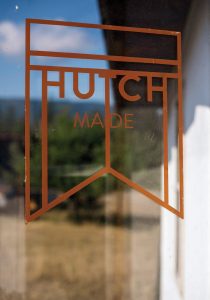
Hutchinson launched his business and career as a full-time maker and teacher after a decade spent fighting wildland fires.
Though he initially envisioned a future in academics, he instead took a decade-long detour into the world of wildland firefighting, working as both a hotshot and a smokejumper. “One of the reasons why that job was really attractive to me was that it afforded me all this time in the off season to make things. I had the freedom to follow my bliss.”

Rough knife handles await shaping and finishing in the shop.
During the winters, Hutchinson experimented widely. “I’m interested in processes, a lot of different processes. I made furniture. I made cedar-strip canoes. I made bags. I made ceramic objects. Just on and on. And it was awesome. Ultimately, I settled on knives for a variety of reasons, but one is just the functionality and the utilitarian value that knives have.”
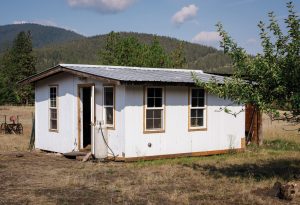
Hutchinson’s modest shop space is located just outside of Arlee, Montana.
The value of handmade, flawlessly functional design was another element of wildland fire that spoke to Hutchinson’s deep-rooted aesthetics. “We would make our own gear, because it was so purpose-driven for that job, from the parachute down — the harnesses, the suits… When you’re out there, you definitely want your equipment to perform well, and a lot of the stuff we use on the fire line is handmade. My pack was made by a smokejumper and my boots were made by a bootmaker in Spokane, Washington. People think our packs look really weird [because they’re worn low], but for that specific job it’s perfect — you want it to hang low when you’re bent over digging line because it acts as a counterbalance.”
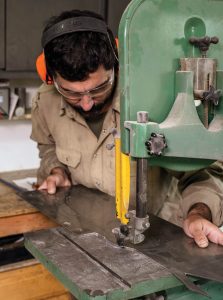
By using only the highest quality steel, Hutchinson can be sure that his blades are consistent and reliable.
That close attention to purpose pervades Hutchinson’s knife designs as well. “I make a tall heel on my knives so you can scoop things up. Good knuckle clearance. The heel of my blades has an elegant little swoop to eliminate that sharp point that some knives have.”
He’s also keen on creating items that will be used by their owners every day. Like a favorite coffee mug, he wants his knife to be the one you return to again and again. “That’s the feeling I’m trying to create with the knives I make, because those sorts of objects do enrich your life. A good coffee cup changes the experience of drinking coffee, and a good kitchen knife changes the experience of preparing food.”
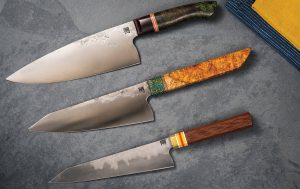
Hutchinson makes a variety of chef’s knives intended to function daily in the kitchen.
While his offerings do include some knives intended for the field, his desire to create everyday pieces drives his focus on kitchen cutlery, investment pieces that will work hard and perform well every day for many decades. “Somebody is going to take it home and use it in their kitchen, and it’s going to last a really long time.”

Hutchinson uses a buffing wheel to polish this knife handle to a fine sheen.
For him, this means using the best materials possible to withstand the kitchen’s inherently demanding environment. He crafts knife handles from durable woods and composite materials that look beautiful but can also withstand wear and tear. He sources steel directly from reliable suppliers, rather than using recycled steel as some other knife makers do. “The performance of my knives is really important to me, and I take a very scientific approach. By sourcing directly from the manufacturer, I have the ability to choose the dynamics and the qualities, and I know exactly what that steel is. I don’t use old files or old saw blades or any of that, because when you start messing with that mystery steel, you don’t really know what you have.”
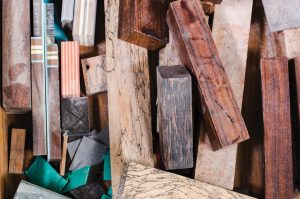
Wood blanks, in a range of sizes and varieties, will eventually become handles for Hutch’s knives.
But all this focus on utility and materials hasn’t hampered the creative drive that first drew Hutchinson to the world of art and craft. “I try to avoid making the same knife twice,” he says. “I’m really interested in the uniqueness of each piece; I’m interested in the design process that occurs over time. Some companies might design a great knife and then just make that knife over and over. I want to see the work grow, and evolve, and continue to improve.”
Melissa Mylchreest is a freelance writer and artist based in western Montana. When she’s not at her desk or in the studio, she can be found enjoying the state’s public lands and rivers with her two- and four-legged friends and family.
Nick VanHorn left the hustle and bustle of Fort Collins, Colorado after college in search of wide-open spaces. Since landing in Montana, VanHorn has worn a variety of hats, from ski patroller to bike mechanic to broadcast television professional. Whatever the task, VanHorn can be found with a camera in-hand to document the journey.



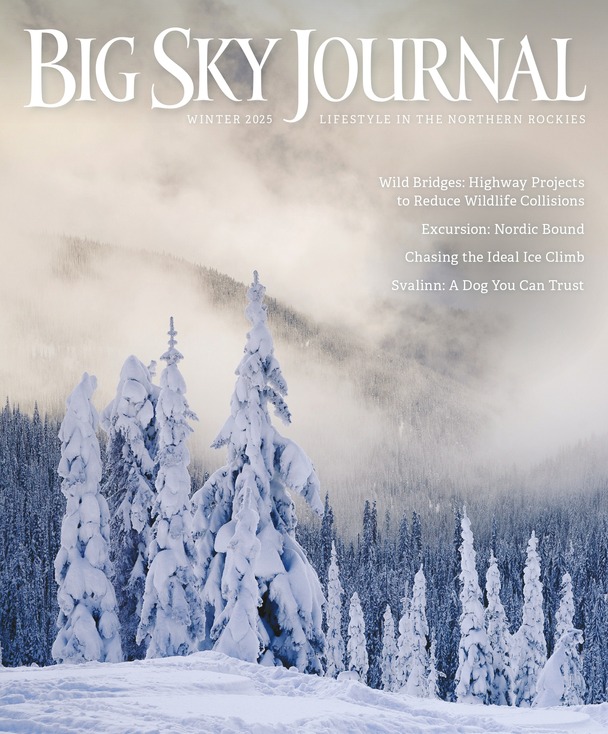
No Comments